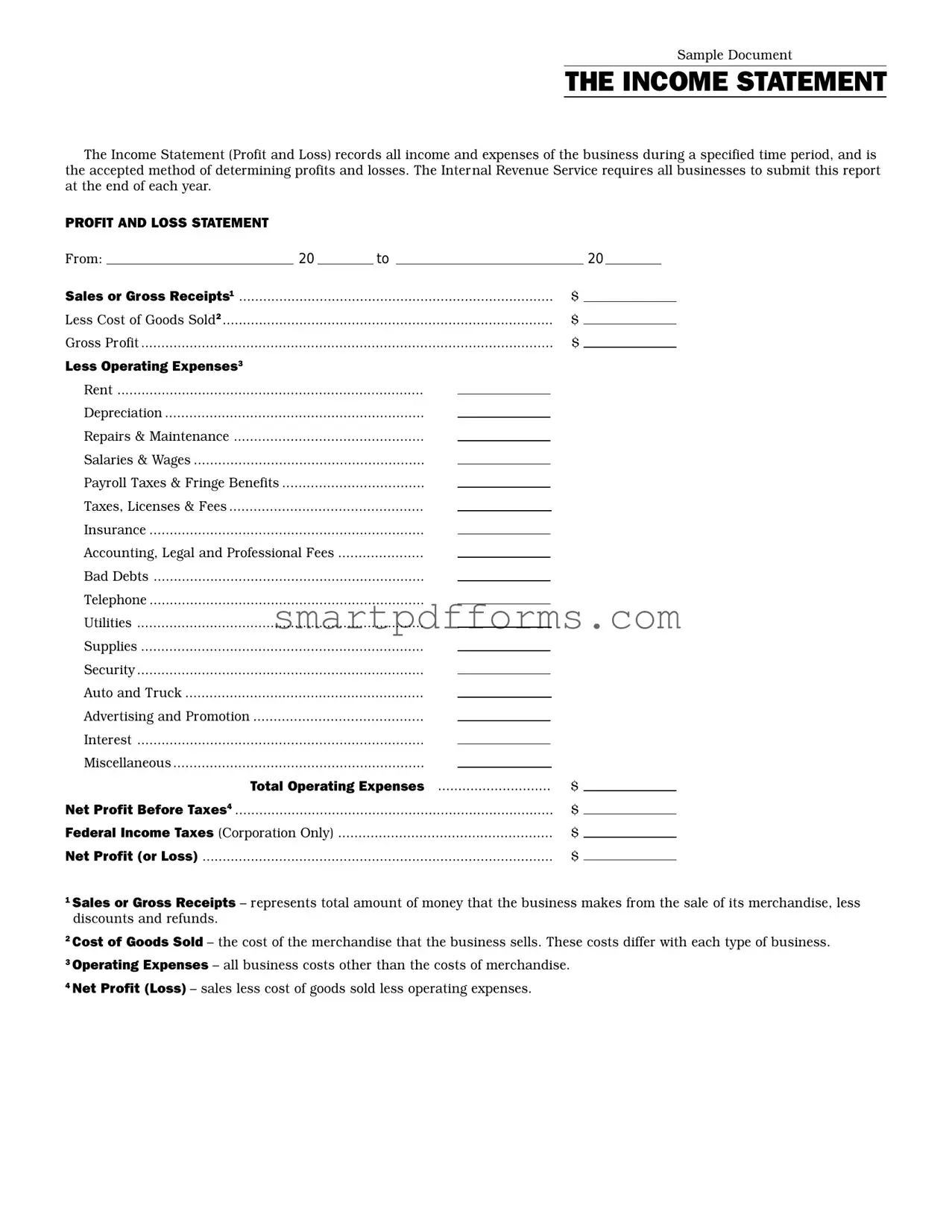Blank Business Income Statement Pdf PDF Template
The Business Income Statement PDF form serves as a comprehensive record, capturing all income and expenses a business incurs within a specified timeframe. This document is crucial for tracking profitability, guiding financial decisions, and fulfilling annual reporting requirements set by the Internal Revenue Service. Whether you're aiming to analyze your business's financial health or prepare for tax season, learning how to accurately complete this form is essential.
Ready to take a closer look at your business's financial performance? Click the button below to start filling out your Business Income Statement form.
Make This Document Now

